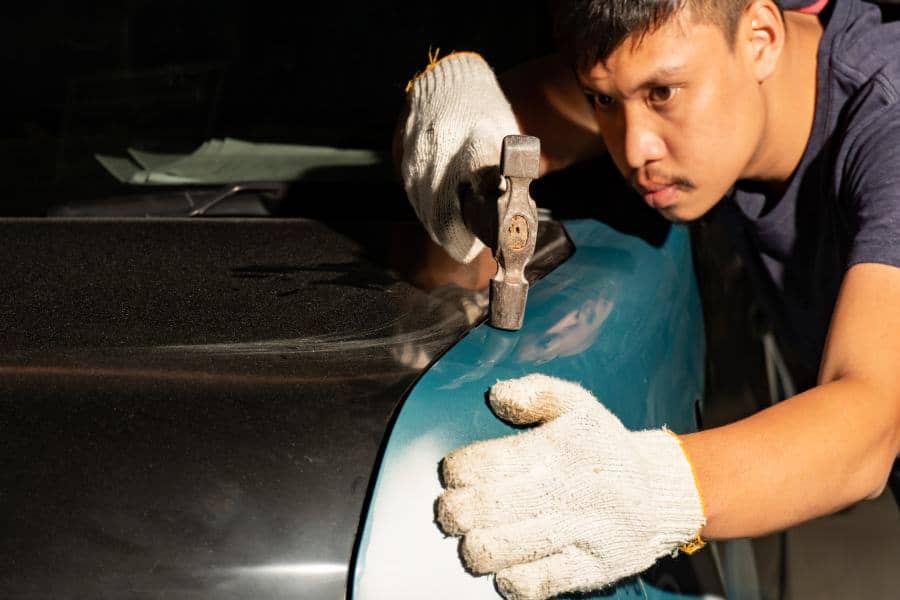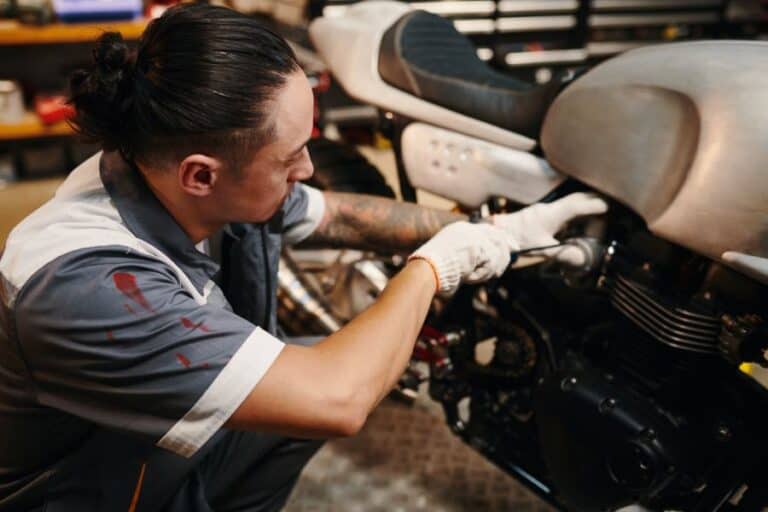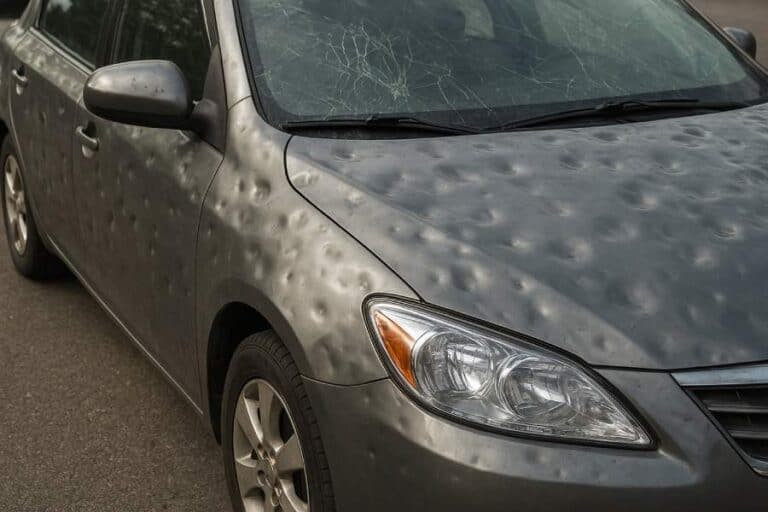The Science Behind Paintless Dent Repair: How It Works And When To Use It
In the realm of car maintenance, Paintless Dent Repair (PDR) is recognized as a groundbreaking and effective solution for fixing small dents and blemishes. Its rise in popularity can be attributed to its affordability, environmentally friendly nature, and preservation of the car’s original paint finish. So, what are the underlying principles of PDR, and how can car owners decide when it’s appropriate to utilize this method? Let’s delve into the details of this advanced repair technique.
Understanding Paintless Dent Repair
Paintless Dent Repair (PDR) is a technique used to eliminate dents from vehicles without the necessity of repainting or significant bodywork. This method is especially useful for fixing small imperfections caused by hail, minor collisions, and other impacts that leave the paint intact. In contrast to conventional repair methods that require sanding, filling, and repainting, PDR employs unique tools and methods to restore the affected area to its original shape.

The Physics of Metal Deformation
To grasp the mechanics of Paintless Dent Repair (PDR), one must first delve into the principles of metal deformation. A dent results in the metal being displaced from its initial form, leading to areas of stretching and internal tension. The flexibility of the paint is also crucial; if it remains intact without any cracks or chips, the damage is typically appropriate for PDR. The primary objective of this technique is to restore the metal to its original shape while avoiding further stress or damage to the paint surface.
Tools and Techniques in PDR
PDR technicians use an assortment of specialized instruments to fix dents.
- Dent Rods and Picks: These tools allow technicians to reach the rear side of a dent, enabling them to carefully manipulate the metal back to its original shape.
- Glue Pulling Kits: When access from behind is not possible, specialists utilize adhesive tabs along with pulling devices to elevate the dented section.
- Light Boards and Reflectors: These instruments assist in pinpointing the exact position and depth of the dent, which is crucial for precise repairs.
- Rubber Hammers and Tappers: These implements are employed to even out raised areas or flaws once the dent has been corrected.
The process involves a combination of pushing, pulling, and tapping, all while carefully monitoring the progress to avoid over-correcting or damaging the surrounding area.
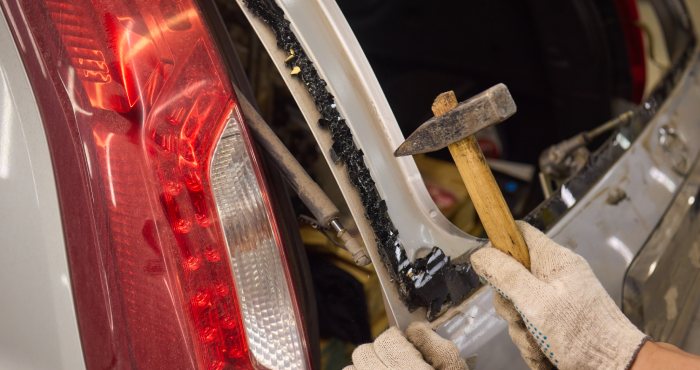
The Role of Skill and Experience
Although the tools play a vital role, the technician’s skill is just as essential. Paintless dent repair (PDR) demands a thorough knowledge of metal characteristics, paint flexibility, and pressure mechanics. A skilled technician can accurately assess the necessary force to reshape the metal and bring the panel back to its original form without inflicting further harm.
Benefits of Paintless Dent Repair
1. Preservation of Original Paint
A key benefit of Paintless Dent Repair (PDR) is its ability to keep the original factory finish of a vehicle intact. This aspect is crucial for maintaining the car’s value since repainting can result in color discrepancies or visible variations in texture.
2. Cost-Effectiveness
Conventional techniques for dent repair typically require several stages such as sanding, filling, and repainting, making them costly. In contrast, Paintless Dent Repair (PDR) streamlines the process by removing these steps, leading to reduced costs for both labor and materials.
3. Eco-Friendliness
PDR is an eco-friendly choice as it eliminates the need for paints, fillers, and various chemicals. This approach helps to decrease waste and limits the emission of harmful volatile organic compounds (VOCs) into the air.
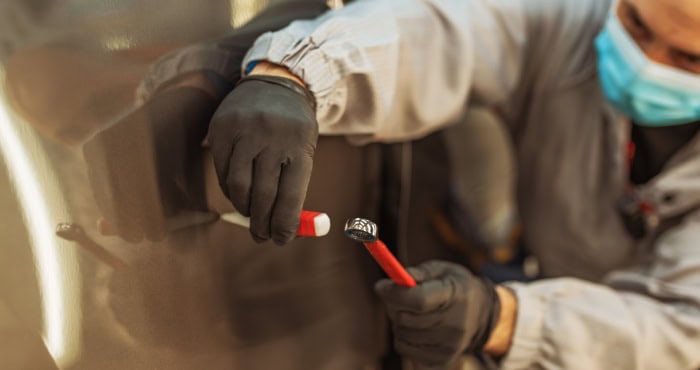
4. Time Efficiency
Paintless Dent Repair (PDR) generally offers a quicker solution compared to conventional repair techniques. Small dents can frequently be fixed in just a few hours, enabling car owners to return to driving without much delay.
When to Use Paintless Dent Repair
1. Size and Depth of the Dent
PDR works best on dents that are small to medium in size. Although it is possible to fix larger dents, the difficulty of the repair tends to rise with both the size and depth of the damage.
2. Location of the Dent
The position of the dent is essential in assessing the viability of Paintless Dent Repair (PDR). Dents found on smooth, easily reachable areas such as doors, hoods, and fenders can be repaired more straightforwardly. In contrast, dents located on edges or in regions with structural supports might present greater challenges for repair.
3. Condition of the Paint
Should the paint be damaged, such as having cracks or chips, then PDR might not be the most suitable choice. For the procedure to function properly, the paint must remain intact.
4. Type of Material
PDR is most effective on conventional steel and aluminum surfaces. However, many contemporary vehicles incorporate composite materials that might not be compatible with PDR methods.
Choosing a Professional PDR Technician
When it comes to Paintless Dent Repair (PDR), it’s crucial to select a skilled technician who possesses the right expertise. Seek out professionals who hold certifications from respected organizations or have completed specialized training programs. Additionally, checking reviews and asking for referrals can assist in securing excellent service.
The Future of Paintless Dent Repair
- Modern Vehicles and Materials: The use of high-strength steel and aluminum alloys in contemporary automobiles presents challenges for conventional paintless dent repair (PDR) methods, necessitating the development of specialized tools and techniques.
- Innovations in Tools: Ongoing improvements in PDR equipment are enhancing the efficiency and versatility needed to address the changing designs of vehicles.
- Role of AI: The incorporation of artificial intelligence is set to improve the accuracy of dent detection and repair within the PDR process.
- Robotics in Repair: The introduction of robotics could transform PDR by automating intricate repairs with improved precision and uniformity.
- Evolution of the Industry: As automotive technology progresses, PDR methods will evolve to remain compatible with modern materials and vehicle configurations.
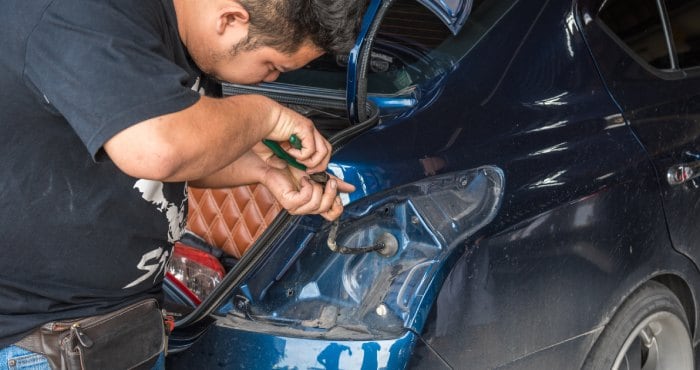
Paintless Dent Repair (PDR) is an impressive combination of technical skill and artistry that provides an effective method for fixing minor damages to vehicles. By grasping the underlying concepts of PDR and acknowledging its advantages as well as its constraints, car owners can choose wisely among their repair alternatives. Whether facing a small dent or damage from hail, PDR serves as a budget-friendly, eco-conscious, and swift approach to rejuvenating your vehicle’s look while maintaining its inherent value.

